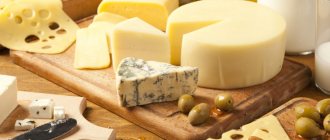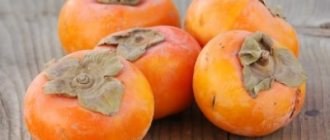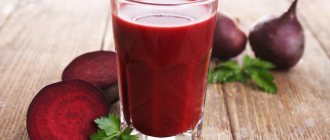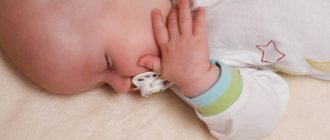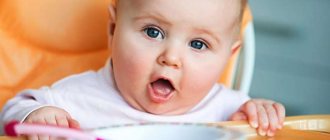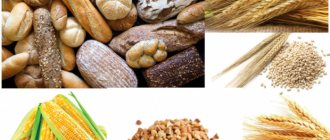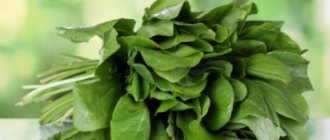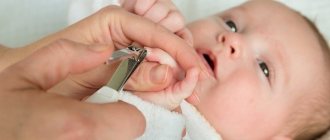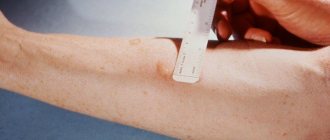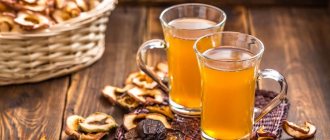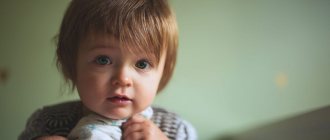Diarrhea in children, especially young children, is not only an unpleasant symptom, but also very dangerous. During diarrhea, the body loses a large amount of fluid, and with it vital vitamins and microelements. Diarrhea may be accompanied by vomiting, fever, general weakness and other associated symptoms.
If your baby experiences frequent loose stools, an urgent medical consultation is necessary to determine its causes. Depending on the causes and accompanying symptoms, treatment and appropriate nutrition will be prescribed. What kind of diet is needed for diarrhea in a child?
What can cause diarrhea?
Diet for diarrhea in a child plays a very important role
Diarrhea is not an independent disease; it can be a symptom of the following ailments:
- Dysbacteriosis
- Colitis
- Acute intestinal infection
- Food poisoning
With any of these diseases, children develop intestinal dysfunction, so nutrition that is especially gentle on the mucous membrane is necessary. The most common cause of diarrhea in childhood is food poisoning or toxic infections.
Food poisoning can occur due to the ingestion of stale foods or toxic substances. Toxic infection develops against the background of consumption of products containing microorganisms, their metabolic products, as well as living cells of the infectious agent. This disease is acute and is not transmitted by contact.
Microorganisms that enter the body under normal conditions do not reproduce; in cases where the child’s immunity is lowered, they can cause enormous harm to health. Under certain conditions, bacteria acquire pathogenic properties and can cause infectious diseases.
How to determine the cause of diarrhea in a child
A child very rarely wants to eat if his tummy hurts
In order to choose a diet for a child, you need to determine the cause of diarrhea, based on this, therapeutic nutrition will be prescribed. Symptoms of poisoning:
- Deterioration of general condition
- Weakness
- Heat
- Irritability
- Vomit
- Abdominal pain
- Nausea
Poisoning most often begins to manifest itself with the appearance of vomiting, then the temperature rises sharply and frequent diarrhea occurs.
This condition is very dangerous due to extreme dehydration of the body. Therefore, it is first necessary to replenish the fluid lost from the body due to infection.
First aid
As soon as the child shows signs of poisoning, he needs to undergo gastric lavage. For this, clean drinking water at room temperature is used at the rate of 0.02 liters per 1 kg of baby’s weight. After the baby drinks the required amount of liquid, he will begin to vomit. Then you need to give him sorbents:
- Filtrum
- Activated carbon
- Enterosgel
- Lactofiltrum
Read: Functional diarrhea - what is the danger of the disease and how to treat it
The main stages of recovery of a child’s body with diarrhea
Therapeutic nutrition for diarrhea should take place in several stages:
- Restoring lost fluid
- Frequent and small meals
- Eating easily digestible and light foods that cannot damage the intestinal mucosa
- Dietary food appropriate for the child's age
What to give a child with diarrhea
If a child has diarrhea, you need to take him off water
If there is no vomiting, you can start giving the child small doses (preferably from a spoon). There are many preparations containing mineral salts to replenish and retain fluids entering the baby’s body:
- Oralit
- Regidron
- Electrolyte
- Gastrolit
In addition to special preparations, you can use decoctions and compotes, which, in addition to replenishing fluid, will provide the body with vitamins and minerals lost during illness in order to restore strength and fight the consequences of the disease:
- Rice congee
- Rose hip tea
- Chamomile drink
- Compote without sugar from dried fruits
- Blueberry juice
- Compote with raisins
- Carrot broth
- Medicinal mineral water without gas
To prepare a solution that can replenish the required amount of salt in the body, you need to take half a teaspoon of salt, soda and sugar per glass of water. You can feed your baby with this solution from a spoon every five minutes. Recipe for a drink to restore vitamins in the body: Take a banana, mash it with a fork, add half a spoon of salt and a spoon of sugar and pour in a liter of water.
Is it possible to have dried fruit compote for diarrhea?
During treatment for diarrhea, it is important to adhere to a certain diet. The patient's diet should include products that have an astringent, strengthening effect, do not irritate the mucous membrane of the stomach and intestines, and have an enveloping effect.
Fresh fruits and starchy vegetables increase intestinal motility and only worsen the situation. Accordingly, compotes and decoctions made from them also do not have the properties necessary for the treatment of diarrhea.
But dried fruits - raisins, prunes, dried apples - act differently. Firstly, dried fruits contain more vitamins and microelements, and secondly, they include a significant amount of pectin. This substance not only has an astringent effect, but also removes pathogenic microflora.
Compote for diarrhea solves several problems at once:
- A decoction of dried fruits saturates the body with micro- and macroelements, simple sugars, and vitamins.
- The liquid from the compote is better absorbed. Plus, it tastes much better than regular water. When treating diarrhea, young patients are more willing to drink compotes and fruit drinks than water or tea.
- Dried fruits and decoctions from them have a strong astringent effect, reducing the intensity of diarrhea.
[adsp-pro-2]
Whether it is possible to drink compote when treating diarrhea depends on the general condition of the patient. If you have diabetes or are allergic to certain dried fruits, you will have to avoid the drink.
What to feed a baby with diarrhea
During an acute period, accompanied by fever and nausea, the baby should be fed light semi-liquid or puree foods. Vegetables and cereals are cooked with more liquid than usual and ground. The meat is served in the form of puree or soufflé; the fish must be cleaned of all bones, steamed and mashed with a fork.
If a child refuses to eat, there is no need to force him to eat, as this may cause vomiting. You cannot feed your child foods that he has chosen himself; they can be harmful to his fragile intestines. Such products include:
- Chips
- sparkling water
- Candies
- Chewing gum
- Chocolate
With their help, you can cause irreparable harm to the body: against the background of a diseased intestine, inflammation of the pancreas or liver failure can develop. In addition to dietary meals, complex vitamin preparations are prescribed to restore nutrients lost with diarrhea and vomiting.
Read: What is given to children for diarrhea and in what dosage: detailed answer
You should not feed your child foods that can increase intestinal motility and stimulate bile production. Such foods can cause fermentation in the intestines:
- Milk
- Dairy products
- Yoghurts
- Cabbage
- Tomatoes
- Mushrooms
- Baking
- Smoked and marinated dishes
- Pickles
Fresh juices
Freshly squeezed juices are contraindicated not only for diarrhea, but also for any problems with the digestive system. An increased content of fruit acids and sugars can affect the mucous membrane of the stomach and intestines, causing diarrhea. Such drinks should be treated with caution, because, despite the benefits they bring, there is still another side to the coin. Freshly squeezed juices can provoke disruption of the pancreas, affecting lipid metabolism, thereby increasing blood sugar levels.
Diet for infants
You should not force your child to eat
Despite the fact that doctors previously recommended abstaining from any food at all, modern pediatricians do not adhere to this concept. Lack of nutrients during fasting will negatively affect the development of the baby, lack of protein for his growth, sudden weight loss, and decreased immunity.
In such conditions, it will be very difficult for the baby’s body to recover quickly, tissue regeneration will slow down and the intestinal mucosa will be damaged for a long time. Therefore, it will be impossible to switch to regular food for a long time.
For breastfed babies, it is recommended to continue feeding much more often, while reducing the single dose.
Breast milk is an indispensable product for babies up to one year old, even during diarrhea: the biological active substances it contains help strengthen the immune system and help the baby cope with the disease.
Feeding bottle-fed babies must be approached individually. The amount of mixture is determined based on the frequency of regurgitation and the presence or absence of vomiting. Feeding should be done every 2 hours, the volume of the mixture should be 50 ml. On the 4th day, feeding is gradually transferred to normal mode. Babies from five months of age are allowed to feed with dairy-free rice or buckwheat porridge. Children aged eight months need to add yolk, meat broth, jelly and meat puree to their diet.
Diet for children over one year old
At the onset of the disease, it is necessary to add two more meals between feedings and reduce the amount of food per meal. The amount of food increases daily. A diet for diarrhea in a child includes eating cereal soups:
- Rice
- Buckwheat
- Perlovova
Then you can switch to porridge from the same cereals. You can give your baby pureed soups with vegetables:
- Potatoes
- Carrot
- Zucchini
- pumpkin
These vegetables are good for the intestines, because when cooked they contain a large amount of pectin - a substance that can bind water and swell, forming a mass that, passing through the esophagus, adsorbs the remains of microorganisms, bacteria and toxic substances.
When exposed to an acidic environment, pectin breaks down into microelements, including calcium, which has an anti-inflammatory and restorative effect for the intestines. Fresh berry jelly is good as a dessert. For diarrhea, jelly and blueberry fruit drinks are preferable.
Eating thermally processed vegetables and fruits helps to eliminate the symptoms of intoxication and normalize stool. You can include jellies, compotes, fruit drinks and mousses with the addition of lemon or cranberry juice in your diet. On the third day, it is allowed to include fermented milk products in the diet to restore the intestinal microflora:
- Acidophylline
- Biokefir
- Lactonium
- Narine
Read: Acute diarrhea: treatment and symptoms, recovery from illness
All these drinks must be served fresh, their fat content should be minimal (no more than 2.5%). Allowed:
- Drying
- Biscuits
- Baranki
- White bread crackers
Then you can include low-fat cottage cheese, banana puree, and baked apples in your diet. Baked apples contain many useful minerals, help restore normal intestinal microflora and restore the intestinal mucosa.
You can switch to raw apples only after a week. It is recommended to grate the apple first. In the second week, you can introduce meat products into your diet:
- Steamed chicken meatballs
- Veal in the form of soufflé
- Ground turkey
- You can steam cutlets or meatballs from lean fish meat.
Prohibited Products
Some products are strictly prohibited!
In order not to cause harm to the digestive system, which restores its functions, you should not eat the following foods:
- Raw vegetables
- Nuts
- Black bread
- Mushrooms
- Legumes
- Sweet carbonated drinks
In order not to damage the irritated mucous membrane of the stomach and intestines, all foods and drinks should be given to the child warm. The diet must be followed for at least two weeks after the symptoms of the disease disappear. The child’s diet is prescribed individually by the doctor.
Sugar can only be given as an additive to drinks. You cannot cook soups with rich, fatty meat broths.
Recipes for healthy compotes
What compote to drink for diarrhea depends on the cause of its occurrence. But there are also universal products from which you can make a tasty and healthy drink. If we highlight them by place, then in first place will be apple compote, made from dried raw materials.
It is also recommended to prepare pear mixtures for diarrhea. Prunes are acceptable if they do not cause a violent reaction in the body. For many, this product leads to increased distress due to its cleansing properties.
Apple compote recipe
Apple compote is very effective for diarrhea, as it contains the maximum amount of pectin. This substance collects and removes harmful substances from the body well. Additionally, the composition will contain plant fibers and fiber, and they have the best effect on the functioning of the gastrointestinal tract. Prepare a delicious drink like this:
- Take 300 g of dried apples for 2 liters of boiling water;
- as soon as the broth boils, reduce the heat and leave for 30 minutes at the minimum level;
- You need to take a warm or cool decoction, but not boiling water.
Recipes for diarrhea in a child
Meat soufflé in a water bath
- Lean meat – 100g
- White bread
- Egg – 1 piece
- Vegetable broth – 50 g
- Clean the meat from films, fat and tendons and cook until soft.
- Soak the bread in the broth and pass through a sieve.
- Cut the boiled meat into pieces, pass through a meat grinder, add bread, broth and a raw egg to it.
- Mix everything and put it in the mold. Place the mold in a pan with water and put in the oven for half an hour.
Diet rice porridge
Boil rice in water until sticky. Take a glass of water for 2 tablespoons of rice. Pour half a glass of milk into the almost finished porridge, add sugar and salt to taste and bring to a boil. Remove the pan from the heat and rub the porridge through a sieve. Place the pureed mixture back into the saucepan and simmer for a minute over low heat. You can add a little butter. Diet porridge is ready.
The importance of diet in the treatment of diarrhea in children is enormous! Only with proper nutrition will you be able to achieve the desired effect - the baby’s recovery.
Read along with this article:
- Vomiting and diarrhea during pregnancy: when should you sound the alarm?
- How to help if a child has diarrhea and vomiting?
- What to do if a child has diarrhea: main causes and treatment
- Diarrhea in a two-year-old child: what to do about diarrhea in babies
- Mom has diarrhea while breastfeeding, the danger of diarrhea during...
- Diarrhea in a 9 month old child, causes of diarrhea in children and its treatment
- Enterofuril for diarrhea in a child: causes, complications and...
- What can you give a child for vomiting: the most effective...
- Popular anti-diarrhea remedies
What can a child eat with diarrhea? Nutrition and diet for diarrhea
Diarrhea in children is an unpleasant event, and mothers do not always understand what to feed their child with diarrhea.
Diarrhea can suddenly begin in both an adult and a baby. In children it happens even more often, since their intestinal microflora has not yet fully formed, and the desire to put not always clean hands and foreign objects into their mouths is extremely strong. Also, the child’s body can react in a similar way to overeating or an infection introduced into the gastrointestinal tract.
Diarrhea is especially dangerous for babies, as it is accompanied by dehydration in a very short time. Taking into account the severity and additional symptoms, the baby is prescribed treatment, but, despite the signs and symptoms, a certain diet is always prescribed for diarrhea.
What can a child over 1 year eat?
When creating a menu for a one-year-old child, you need to remember the important role of protein foods. Animal protein contains eggs, meat and fish dishes. It helps restore strength and maintain the liver, which has suffered from toxic damage by infection.
You need to be careful with milk protein and give the patient low-fat fermented milk products in small quantities. Kefir or yogurt without additives will help restore intestinal flora, reducing the risk of diarrhea returning again.
If a child has loose stools at 2 years old, it is allowed to feed the child low-fat fermented milk products on the 1st day, and after 2-3 days - low-fat cottage cheese.
If the baby refuses to eat at all, then you should not insist on it.
In case of severe diarrhea, you need to skip 2-3 feedings. Then meals should be made into fractions. It is recommended to feed the baby every 2 hours in reduced portions, increasing the frequency of feedings by 1-2 times, bringing them up to 5-6 times. Over the course of 7-10 days, portions must be increased little by little until the gastrointestinal tract returns to normal.
The lack of food must be replenished with liquid. To replenish the reserves of lost fluid, you need to give a child a lot to drink when he has loose stools, offering him plain water or medicinal solutions to replenish the missing moisture.
In the first days, the menu should be dominated by slimy soups in vegetable broth, with the addition of rice or buckwheat. It is also recommended to cook dairy-free rice, buckwheat or oatmeal porridge. To improve the taste, you can add a little honey. Feed a child 1-3 years old pureed soups and porridges with the consistency of thick sour cream.
The baby is allowed to cook berry and fruit jelly, especially blueberry, as well as compotes. Biokefirs and lactonia are allowed to be given from the first days of illness. When deciding whether cottage cheese can be added to the diet menu, it is better to introduce the product on day 3-4.
On day 2, the diet can be varied with white bread croutons and low-calorie crackers. On the 3rd day, you can return mashed bananas to the menu.
What fruits are not harmful for diarrhea? During diarrhea, it is useful to give your baby baked apples, as they contain pectin, which promotes normal fermentation in the colon and the growth of bifidobacteria. Essentially, apples are natural probiotics. Fresh apples can only be eaten after 3 days, grated.
From the 4th day onwards, it is allowed to add steamed chicken, veal or minced turkey dishes, as well as fish products and eggs to the menu.
Nutrition according to the method of Dr. Komarovsky
When diarrhea occurs E.A. Komarovsky does not recommend feeding the baby on this day. The next day, he advises preparing boiled rice (a small amount), plus giving the water in which the rice was cooked.
On the second or third day, you can give your child bananas and apple juice, boiled potatoes, which help stop diarrhea.
Fresh bread is excluded. It is allowed to give dried white bread or crackers from it.
Take only lean meat and fish and steam them. It is allowed to cook jelly or give strong tea immediately after the onset of diarrhea.
For diarrhea, preference is given to mucous soups and porridges that strengthen the gastrointestinal tract.
This diet will alleviate the condition of a sick child even at 6 years old.
When creating a diet for a child with loose stools, it is important to exclude foods that can worsen the baby’s condition:
- Products with a laxative effect - beets, melon, dried fruits.
- 100% juices and nectars. They also have a laxative effect. Plus, they can worsen an already poor appetite.
- Products that activate fermentation processes in the intestines. These are dairy and fatty fermented milk products, grapes, cabbage, and legumes. It is recommended to completely remove all fresh vegetables and fruits from your diet.
- Sweets, cookies, etc. These are heavy carbohydrates that interrupt your appetite and cause a false feeling of fullness. Such foods negatively affect the functioning of the gastrointestinal tract, liver and kidneys.
- Cereal porridges made from pearl barley and millet.
- Fatty meat, fish and meat broths. It is difficult for a weakened body to digest fats if it has diarrhea.
- Smoked, canned and pickled products. They irritate the walls of the stomach and intestines and should not be given.
- Mushrooms, nuts.
- Carbonated drinks.
All dishes should be served warm, but they should be warm, not hot.
After diarrhea ends, you must continue the diet for 10-15 days. It is better to discuss the timing of the diet with your doctor, as it depends on the causes of diarrhea and its severity.
In conclusion, we can say that following a diet for diarrhea in a child is the key to a speedy recovery. If accompanying symptoms appear, it is not recommended to prescribe treatment yourself, but to immediately consult a doctor.
Regardless of the treatment, if you have diarrhea, it is recommended to follow the feeding rules described above. Meals must be divided into fractions. Give your child fluids as often as possible to reduce the risk of dehydration. Eliminate from the diet foods that have a laxative effect and promote fermentation. All these measures will increase the effectiveness of treatment and speed up the process of normalizing the baby’s gastrointestinal tract.
Source: https://otrav.net/otravlenie-u-detej/chem-kormit-pri-ponose/
